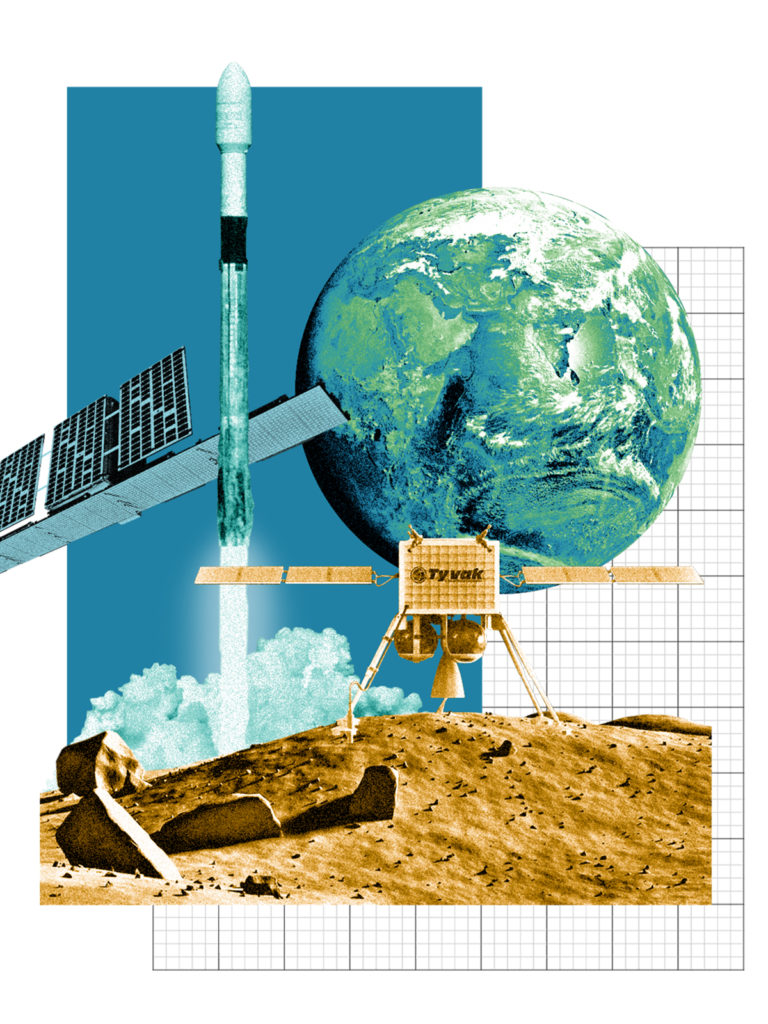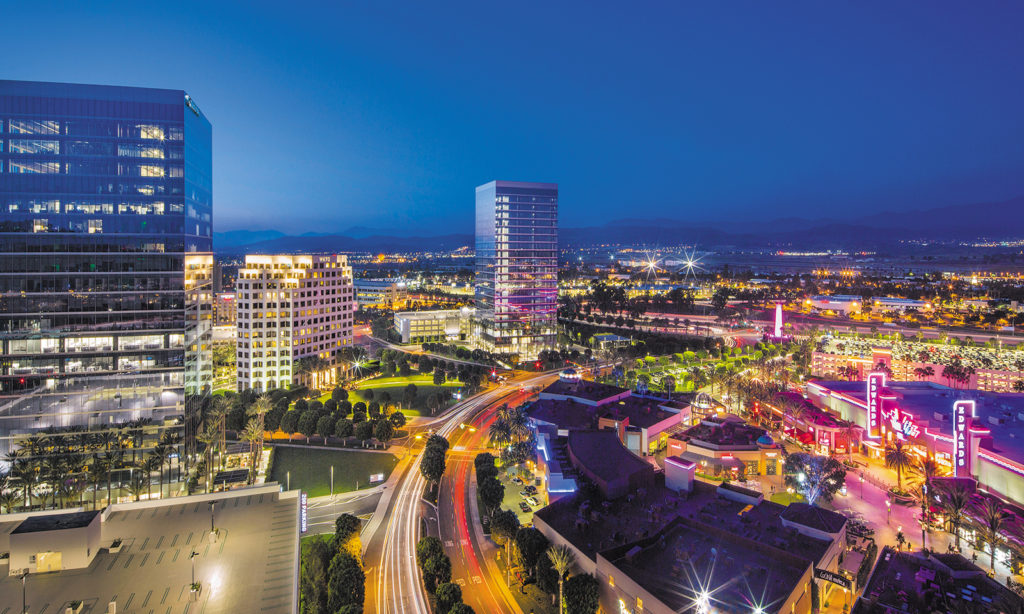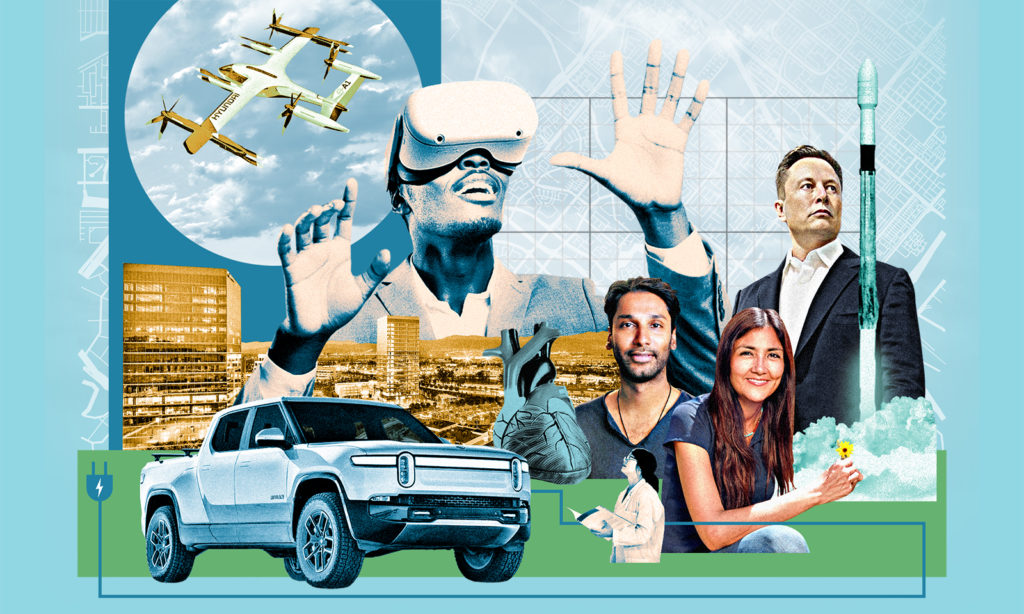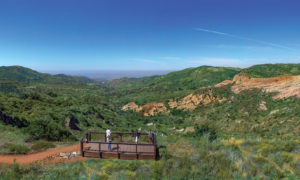 Lumitron Technologies is building a novel X-ray machine to find and treat cancer as no one has done before.
Lumitron Technologies is building a novel X-ray machine to find and treat cancer as no one has done before.
Enevate is working to make EVs as convenient as their gas-powered rivals.
The Change Co. aims to provide “elite” financial services to underserved Black and Latino communities.
Irvine is a hotbed of big dreams and diverse new ideas, with 1,152 startups and counting, according to the IT firm Tracxn. Already home to the inventors of the heart valve, the internet’s HTTP system and the “World of Warcraft” video game, the city continues to attract innovators with world-beating ambition.
“Irvine has it all for me as a place to work and live,” says Jenny Ta, a local venture capitalist and serial entrepreneur. “It has both an extraordinary startup culture and extraordinary work-life balance.”
Last December, Irvine Mayor Farrah Khan doubled down on Irvine’s ambition to compete with such iconic, older tech centers as the San Francisco Bay Area’s Silicon Valley and the East Coast’s Research Triangle Park, launching an Innovation Council to invite and assist tech companies.
The council’s support will add to four key attractions Irvine already offers to entrepreneurs: its strategically planned infrastructure, clusters of like-minded businesses, innovative culture and healthy worklife balance.
Inviting infrastructure
Like other great innovation hubs, Irvine has close ties to a world-class university, UC Irvine. The difference is that Irvine and UCI were masterplanned from scratch, in the 1960s, to grow up together.
It was a smart bet. Irvine today is home not only to those hundreds of startups but to larger, more established firms, including Google, Microsoft, Mitsubishi and Amazon.
Irvine’s progress as an innovation center sped up in the 1980s. In the spring of 1983, Irvine Company planners began designing a major jobs center to be developed on a 5,000-acre swath of strawberry fields between I-405 and I-5. Those early plans for what would become the Irvine Spectrum District were specifically intended to compete with Silicon Valley, by drawing high-tech software and advanced-science innovators to the growing city.
Mazda Motor Corp. was the Spectrum District’s first major tenant, blazing the trail for other global automotive firms whose executives appreciated Irvine’s connections with UCI, the safety of residential neighborhoods, and the outstanding public schools. Today the district includes 25 million square feet of commercial and industrial space, at last count providing more than 100,000 local jobs.
“Irvine has it all for me as a place to work and live. It has both an extraordinary startup culture and extraordinary work-life balance.” – Jenny Ta, Local Venture Capitalist
The city’s business-friendly infrastructure expanded in 1996 when UCI Research Park opened, adjacent to the university’s campus, to serve as an incubator and fulcrum for innovative new products and services. The park has grown to include 185 acres of land and 2.4 million square feet of research space with resident firms, including Toshiba, Cisco and Intel. Much like Stanford Research Park in Silicon Valley, the idea is to spur teamwork between university researchers and private companies. And there’s evidence that it’s succeeding: Irvine beat out competitors in San Francisco, Austin, Seattle and Boston, with its entrepreneurs obtaining 492 patents over the past 40 years.
“UCI’s aptitude in enabling faculty to develop successful businesses is at a different level than I experienced even at Stanford,” says Lumitron co-founder and UCI professor Chris Barty. Barty had planned to build his cancer-fighting company in Pleasanton before a series of “fantastic interactions with campus folk and industry” changed his mind. Lumitron has since raised $34.6 million toward Barty’s goal of simultaneously finding and treating cancer “without ever having to remove another breast or prostate,” and plans to produce its first X-rays by the end of May.
Convenient clusters
 In moving to Irvine in the early 1980s, Mazda and other big firms joined peers that had already set up headquarters here, including Edwards Lifesciences, the inventor of the heart valve, and Allergan, Inc., the eye-care giant. The large firms became dominant species in new ecosystems, or “clusters,” attracting specialist suppliers, lawyers and accountants, as well as incubators, accelerators and venture capitalists.
In moving to Irvine in the early 1980s, Mazda and other big firms joined peers that had already set up headquarters here, including Edwards Lifesciences, the inventor of the heart valve, and Allergan, Inc., the eye-care giant. The large firms became dominant species in new ecosystems, or “clusters,” attracting specialist suppliers, lawyers and accountants, as well as incubators, accelerators and venture capitalists.
The clusters provide what a spokesperson for Rivian described as “the deep talent pool and easy access to many of our customers and clients” that inspired its decision to move here in 2020 – one year before its IPO became the largest since Facebook’s. Clusters also tend to increase efficiency, cut costs and generate a steady stream of new ideas from the mingling of like-minded innovators, according to local experts.
“People who’ve left Allergan over the years have created more than 80 new companies, spun off by the best kind of entrepreneur,” says Bill Carpou, CEO of Octane, a business-accelerator firm. “This is not the college student in the garage. What you see more in Irvine is the mid-career executive who has worked in a big company. They are much more likely to be successful.”
An innovative culture
A vital ingredient for any aspiring innovation hub is its culture. Ta calls Irvine’s culture a major asset – particularly for female entrepreneurs trying to break into a field in which women-led startups get less than 3% of venture capital funding.
“When I sit down with venture capitalists in Irvine, I never get that oldboys’-club feeling that’s so common in tech,” Ta says.
Irvine’s openness to out-of-the-box ideas – and people – is part of a spirit that includes “the most acceptance of risk that I’ve seen anywhere in the world, and I’ve been to all 50 states and 107 countries,” says Neil Sahota, a UCI lecturer and United Nations adviser on artificial intelligence. “It’s a culture of innovation where people are encouraged to try and learn.”
Some speculate that Irvine’s more recent emergence on the tech scene may be one factor making people more welcoming to new ideas.
“Irvine just doesn’t seem to have the same kind of pecking order as Boston or Silicon Valley, where there are elite VCs, super-elite VCs, and uber-elite VCs,” says Joel West, a professor of innovation and entrepreneurship at Keck Graduate Institute. “People are judged on their results, not their pedigree.”
Those results are being felt throughout the United States and, in some cases, around the world. The Change Co. has built businesses that have loaned more than $50 billion to more than 250,000 borrowers, providing services to more than 2 million Americans. If Lumitron does what Barty says it can, it will provide a globally important breakthrough in the treatment of cancer. Enevate says it now has more than 500 patents worldwide and that its silicon-dominant advanced lithium-ion battery will be able to charge EVs up to 10 times faster than existing technology.

The work/life balance
While Irvine’s Master Plan can’t claim credit for the sunshine, it did design a city where it’s easy to get outdoors. Residential villages, surrounded by parks and open space, circle schools, shopping, and parks in ways that help limit traffic. The plan has also helped make Irvine the safest city of its size for 16 years running, in part by guaranteeing a steady flow of revenue from robust businesses to city coffers – and to local police.
Says Ta: “As entrepreneurs, we hustle all day, so we really want that worklife balance when we come home.”
Irvine’s attractions, including its highly rated K-12 schools, have drawn highly educated and discerning residents. More than 7 in 10 hold a bachelor’s degree or higher. Sixteen colleges and universities crank out thousands of new degrees each year in science, technology, engineering and mathematics (STEM), supplying more high-quality talent.
It’s no wonder the city has achieved the region’s highest jobs-to-workers ratio, plus the fastest job growth in professional services, including computing and engineering, according to a new UCI report. Local entrepreneurs say they’re counting on these trends to continue – and further establish Irvine as a major-league player in diverse industries.
In previous years, “a company would start here, get a first round of funding and then leave for an established tech center, but now we’re seeing capital come in from outside the area, with investors really liking the innovation here and no longer requiring people to move,” says Carpou, at Octane. The payoff for Irvine as a whole is that those jobs and revenue also stay put.
“It’s in Irvine’s DNA to fuel innovation and entrepreneurship,” Sahota says. “And it shows through the city’s established ecosystem and culture to grow and support business.”










